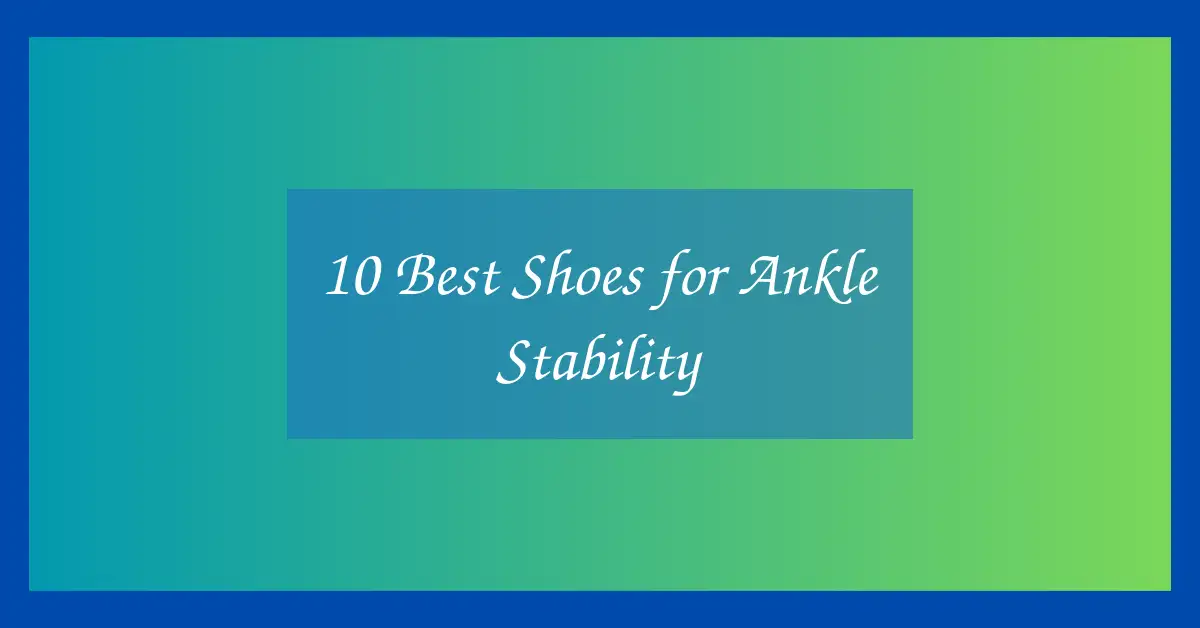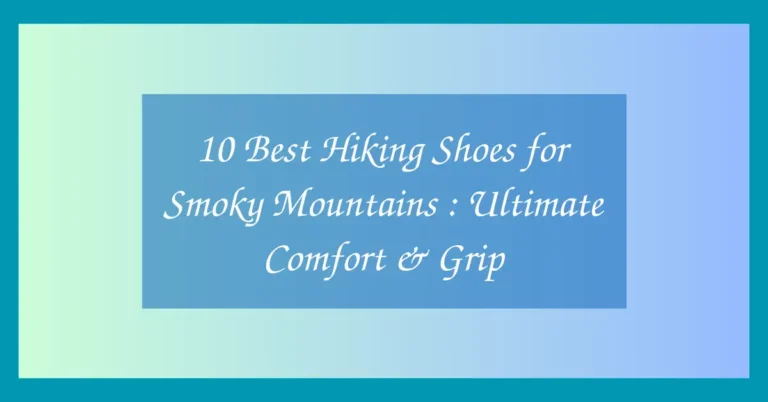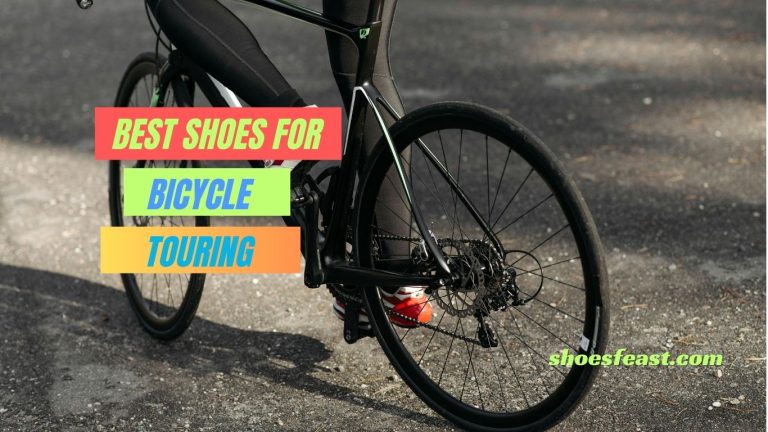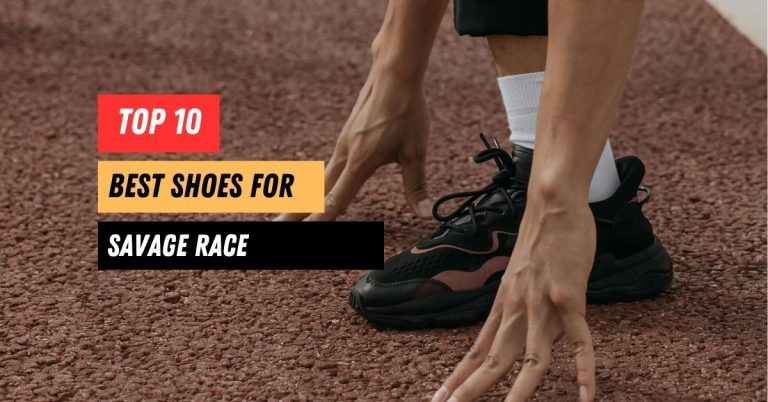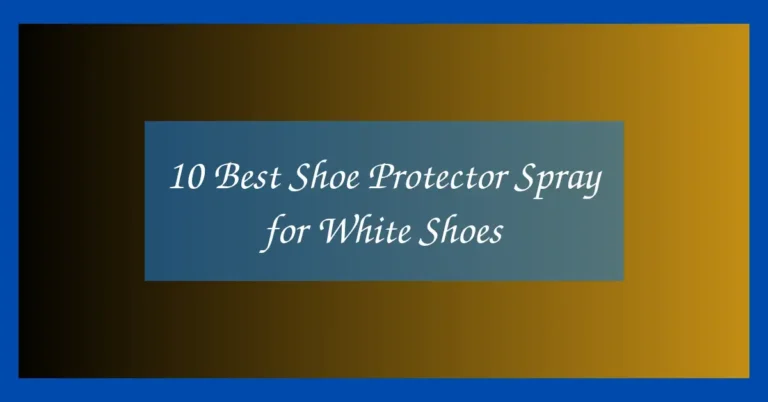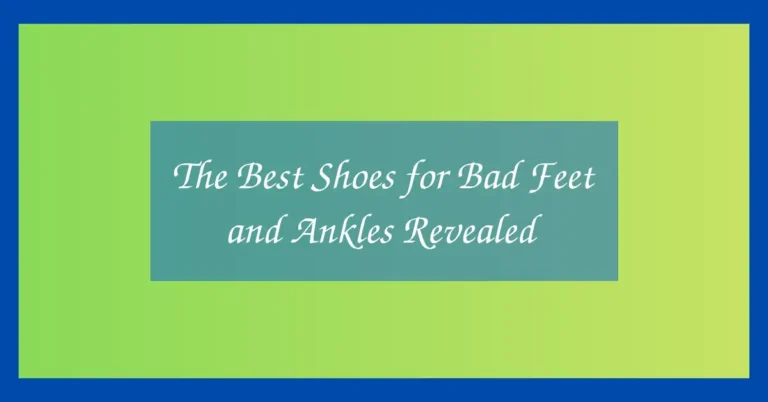10 Best Shoes for Ankle Stability
When it comes to ankle stability, the right footwear can make all the difference. Whether you’re recovering from an injury, dealing with weak or hypermobile ankles, or simply want to prevent potential sprains, wearing supportive shoes is essential for both safety and performance. Ankle instability can lead to discomfort, poor posture, and even long-term joint issues if not managed properly. Shoes designed for ankle support offer structured midsoles, firm heel counters, and enhanced traction to promote balance and reduce the risk of rolling or twisting. They’re especially important for athletes, hikers, and individuals with flat feet or pronation issues. Choosing the best shoes for ankle stability means looking beyond basic comfort to find features that keep your ankles aligned and your movements controlled both during everyday wear and high-impact activities.
Best Shoes for Ankle Stability
1. ASICS Gel-Kayano 30
The ASICS Gel-Kayano 30 is a flagship stability running shoe known for its reliable support and plush cushioning, making it a top choice for those needing ankle stability. The shoe features ASICS’ 4D Guidance System™, which adapts to your stride and keeps your foot aligned, especially helpful for overpronators. Its updated FF BLAST™ PLUS ECO foam offers exceptional energy return without compromising on structure. The rearfoot GEL® technology absorbs shock effectively, minimizing stress on the ankle during heel strike.
A highly structured heel counter hugs the back of the foot, reducing unwanted movement. The engineered mesh upper provides breathable containment, while internal heel padding delivers a secure and comfortable fit. The midsole is wide and stable, encouraging smooth transitions from heel to toe. It also includes a gender-specific 3D SPACE CONSTRUCTION™ that adjusts to different compression patterns for tailored stability.
Ideal for daily walkers, runners, and anyone recovering from minor ankle injuries, the Gel-Kayano 30 combines comfort with biomechanical support. It’s slightly heavier than minimalist shoes, but the added weight contributes to stability. The outsole uses AHAR™ rubber for high abrasion resistance and excellent traction. For individuals with flat feet or a history of ankle sprains, this shoe offers consistent support during repetitive motion.
It excels in both neutral and overpronated gait correction, making it a versatile choice for a wide range of users. ASICS has also made it more eco-conscious, using sustainable materials in its construction. While priced on the higher end, the durability and performance justify the cost. Overall, the Gel-Kayano 30 is an excellent blend of innovation, cushioning, and support designed to enhance ankle control without sacrificing comfort.
Pros:
-
4D Guidance System™ for superior motion control
-
Plush yet stable cushioning with FF BLAST™ PLUS ECO
-
Durable AHAR™ rubber outsole
-
Excellent for overpronators and flat-footed users
-
Secure heel and arch support
Cons:
-
Slightly heavy for speed runners
-
Premium price point
2. Brooks Adrenaline GTS 23
The Brooks Adrenaline GTS 23 continues to be a fan favorite for stability seekers, especially those dealing with ankle issues. Its core stability comes from Brooks’ GuideRails® support system, which gently nudges your foot into alignment to prevent excess movement. This holistic support helps reduce stress not just on the ankle but also on the knees and hips. The DNA LOFT v2 cushioning is softer than previous models while maintaining firmness where needed.
The engineered air mesh upper is breathable yet structured, offering a comfortable but locked-in feel. The 3D Fit Print provides lightweight overlays for added support without added bulk. The outsole is segmented to promote smooth heel-to-toe transitions, ensuring your foot doesn’t roll unpredictably. A firm heel counter helps anchor the rearfoot during each step.
Ideal for everyday runners, walkers, and gym-goers, the Adrenaline GTS 23 delivers a secure fit that enhances balance and prevents ankle fatigue. Its wide base adds lateral stability, perfect for uneven surfaces or long days on your feet. Though not a motion-control shoe, its adaptive support is ideal for mild to moderate overpronators. With a 12mm drop, it subtly shifts pressure away from the ankle and Achilles tendon.
It’s also available in multiple widths, making it suitable for different foot shapes. The Adrenaline GTS line has earned a reputation for reliability, and the 23rd version further refines its winning formula. It’s light enough for moderate running but sturdy enough for injury prevention. Overall, this shoe is a versatile pick for those needing structured yet comfortable ankle support.
Pros:
-
GuideRails® system reduces ankle deviation
-
Soft but stable DNA LOFT v2 cushioning
-
Great for mild to moderate overpronators
-
Available in multiple widths
-
Breathable and supportive upper
Cons:
-
12mm drop may not suit forefoot strikers
-
Less suitable for trail use
3. New Balance 1540v3
Designed specifically as a motion control shoe, the New Balance 1540v3 is a powerhouse when it comes to ankle stability. Built for overpronators and individuals with flat feet, it uses ENCAP® and Rollbar® technologies to limit rearfoot movement and correct gait issues. These features ensure the foot remains centered and supported throughout the stride. It’s especially effective for people recovering from ankle injuries or requiring orthopedic-level support.
The dual-density foam midsole offers both comfort and rigidity, absorbing shock while maintaining structure. Its mesh and synthetic upper allows decent airflow while providing needed durability. A padded collar and tongue further increase ankle containment. The fit is snug around the heel and midfoot but roomy in the toe box to prevent cramping.
The Rollbar® posting system is what sets this shoe apart it prevents your rearfoot from rolling inward or outward, effectively minimizing ankle wobble. The rubber outsole is slip-resistant, which is helpful on various surfaces. While heavier than typical running shoes, the 1540v3 compensates with high structural integrity. It’s Medicare-approved (A5500), making it a go-to option for those seeking medical-grade support.
Whether walking, standing all day, or engaging in low-impact workouts, this shoe holds up to demanding use. Its orthopedic design doesn’t mean a sacrifice in style either, thanks to a clean, modern aesthetic. For users who prioritize stability and injury prevention over speed and agility, the New Balance 1540v3 is a dependable ally.
Pros:
-
Rollbar® technology for rearfoot motion control
-
ENCAP® midsole offers firm and stable cushioning
-
Ideal for flat feet and overpronation
-
Roomy toe box with secure heel fit
-
Medicare-approved for orthopedic support
Cons:
-
Heavier than average running shoes
-
Higher price for casual users
4. HOKA Gaviota 5
The HOKA Gaviota 5 is a premium stability shoe that combines plush cushioning with effective ankle support, appealing to runners and walkers alike. Featuring the J-Frame™ technology, it guides the foot naturally without resorting to rigid medial posts. This design helps correct overpronation while keeping the ankle aligned and stable. Its thick CMEVA midsole offers signature HOKA cushioning, making it ideal for long-distance use.
One of the standout features is the bucket seat footbed, which cradles the foot and locks it into place. This design creates a lower center of gravity, improving balance and ankle control. The new upper is engineered mesh with midfoot overlays that enhance structure and breathability. The heel counter is firm and ergonomically shaped for added control.
A late-stage meta-rocker helps promote a smooth, rolling gait, reducing the effort needed at push-off. It’s especially effective for users who experience instability in the latter part of their stride. The shoe remains lightweight despite its bulky appearance, which helps reduce fatigue. Whether you’re on pavement or treadmills, it delivers consistent support.
The Gaviota 5 excels in shock absorption, reducing impact-related strain on the ankles. Though it’s best suited for those needing maximum stability, it maintains a soft, comfortable ride. The broad platform improves lateral stability, while the outsole offers reliable traction. Overall, this is a high-cushion, high-support shoe that doesn’t feel restrictive ideal for those who want comfort without compromising ankle health.
Pros:
-
J-Frame™ tech offers soft yet structured stability
-
Deep bucket seat enhances ankle containment
-
Rocker sole promotes smooth gait cycle
-
Lightweight for its support level
-
Exceptional cushioning for long-distance wear
Cons:
-
Bulky aesthetic may not appeal to all
-
Pricey compared to average walking shoes
5. Saucony Guide 17
The Saucony Guide 17 offers an excellent blend of moderate stability and modern cushioning, making it a smart option for users looking to protect their ankles without a clunky feel. Its standout feature is the CenterPath Technology, a midsole geometry that guides your foot forward while reducing pronation. This works in tandem with the PWRRUN+ cushioning, delivering a responsive but secure ride.
It features a supportive upper with FORMFIT technology that adapts to your foot’s shape for a personalized fit. The TPU guidance frame helps reinforce stability through the heel and midfoot, enhancing control over each step. The shoe also has a secure lacing system and lightly padded collar that support the ankle without over-restraining it.
The outsole uses blown rubber in key zones for durable traction without compromising flexibility. Compared to previous Guide models, the 17th version provides a smoother transition and better arch support. It’s ideal for moderate pronators and everyday runners who experience minor ankle discomfort. While it doesn’t have as rigid of a build as some motion-control models, it makes up for it with versatility and comfort.
It’s lighter than many traditional stability shoes, making it a good choice for tempo runs, cross-training, and day-long wear. It accommodates custom orthotics well, thanks to a removable insole. For those who need consistent, non-invasive ankle support, the Guide 17 hits a sweet spot between protection and performance.
Pros:
-
CenterPath Technology improves foot alignment
-
Responsive and stable PWRRUN+ cushioning
-
Adaptable FORMFIT upper for snug fit
-
TPU frame adds midfoot and heel stability
-
Lightweight for a stability shoe
Cons:
-
Not suitable for severe overpronators
-
Limited ankle support compared to high-tops
6. Nike Zoom Structure 24
The Nike Zoom Structure 24 is a performance-oriented stability shoe that caters to runners who need consistent ankle support without sacrificing speed or comfort. Its dual-density foam midsole works to correct overpronation by offering firm support along the medial side of the foot. This structure helps guide the foot into a neutral path, reducing stress on the ankle joint.
The shoe features a secure and breathable engineered mesh upper with a padded collar for ankle comfort and containment. A full-length Zoom Air unit provides responsive cushioning, adding spring to your stride while keeping your foot securely grounded. The internal heel counter wraps around the ankle to prevent shifting, delivering a snug fit.
Nike’s Dynamic Fit system ensures the lacing adapts to the shape of your foot, allowing for micro-adjustments that enhance midfoot lockdown. The outsole features crash rails and durable rubber pods that promote smooth transitions and offer solid traction on a variety of surfaces. This is beneficial for users walking or running on pavement or in the gym.
Ideal for moderate overpronators, the Structure 24 balances responsiveness with restraint. It doesn’t feel overly bulky, yet it provides enough underfoot stiffness to control lateral ankle movement. While it may not offer the same rigid control as motion-control shoes, its agile stability design suits active users.
Overall, the Zoom Structure 24 stands out for runners and walkers who want ankle protection packaged in a sleek, performance-friendly design. It’s versatile enough for both speed training and daily errands while ensuring your ankles stay aligned and protected.
Pros:
-
Dual-density midsole for guided support
-
Zoom Air unit for responsive cushioning
-
Padded collar and internal heel counter
-
Good for moderate overpronation
-
Lightweight and breathable
Cons:
-
Less supportive for severe pronation
-
Runs slightly narrow for wide feet
7. Merrell Moab 3 Mid Waterproof
For outdoor enthusiasts seeking ankle stability, the Merrell Moab 3 Mid Waterproof boot delivers outstanding support and rugged protection. Designed as a hiking boot, it features a mid-height collar that locks in the ankle, significantly reducing the risk of rolling on uneven terrain. It’s a go-to for hikers with weak ankles or a history of sprains.
The Moab 3 Mid uses a combination of suede leather and mesh in its upper for both durability and breathability. Its waterproof membrane ensures your feet stay dry, which is important for maintaining traction and ankle control in wet environments. The contoured insole with added arch and heel support is removable and works well with custom orthotics.
The Vibram® TC5+ outsole provides superior grip on rocky or slippery surfaces, boosting confidence with every step. The Air Cushion in the heel absorbs shock and adds further rearfoot stability. This setup protects your ankles during descents and side-hill movements common on hikes.
The shoe includes a molded nylon arch shank that enhances midfoot support, helping prevent torsional movements that could compromise ankle stability. Its sturdy design adds weight, but the tradeoff is well worth it for rugged adventures. It fits true to size and offers enough toe room for comfort on longer treks.
For anyone serious about trail walking, backpacking, or working in uneven outdoor environments, the Merrell Moab 3 Mid is a reliable, ankle-stabilizing companion.
Pros:
-
Mid-height design enhances ankle security
-
Vibram® outsole offers excellent traction
-
Waterproof with breathable mesh lining
-
Air Cushion heel for shock absorption
-
Built-in arch and heel support
Cons:
-
Heavier than casual shoes
-
Not suitable for indoor or everyday wear
8. Orthofeet Coral Stretch Knit (Women’s)
Specifically designed for foot and ankle conditions, the Orthofeet Coral Stretch Knit is a medical-grade walking shoe ideal for those dealing with chronic ankle instability, arthritis, or past injuries. Its lightweight yet stable design incorporates multiple orthopedic features to reduce stress on the ankle while walking or standing.
The shoe features a premium orthotic insole with anatomical arch support and a deep heel cup that cradles the foot. This corrects foot posture, reducing strain on the ankle joint. The Ortho-Cushion™ system includes a multilayer sole with air cushioning that absorbs shock and encourages a natural stride.
Its stretchable knit upper gently conforms to the shape of the foot, accommodating swelling or deformities without compromising support. The padded collar and extended heel stabilizer provide targeted ankle security. An extra-wide toe box prevents overcrowding and improves balance.
Coral shoes are particularly well-suited for older adults or individuals with diabetes, plantar fasciitis, or ankle arthritis. The lightweight feel makes it easy to wear throughout the day, while the non-binding design prevents pressure points. It also comes in wide and extra-wide sizes to ensure a comfortable fit for all foot shapes.
While not intended for athletic use, it excels as a therapeutic walking shoe. The removable insoles accommodate custom orthotics, and the grip-friendly outsole ensures stability on slick indoor surfaces.
Pros:
-
Orthotic support system for ankle alignment
-
Stretch knit upper accommodates foot swelling
-
Extended heel stabilizer for rearfoot control
-
Extra-wide toe box improves balance
-
Padded collar adds ankle comfort
Cons:
-
Not suitable for running or hiking
-
Style may not appeal to younger buyers
9. Reebok Nano X4 Training Shoes
For those seeking ankle stability during cross-training, weightlifting, or HIIT workouts, the Reebok Nano X4 is a strong contender. This versatile training shoe features a Lift and Run Chassis system that provides a firm platform under the heel while allowing flexibility in the forefoot. This ensures ankle alignment during compound movements like squats and lunges.
The X4 sports a Flexweave® woven upper, combining breathability and structured support. It locks down the midfoot to prevent unwanted side-to-side motion. The TPU heel clip stabilizes the rearfoot, giving you confidence during lateral agility drills or plyometric jumps.
The midsole is made of responsive EVA foam, which provides just the right balance between cushioning and firmness. This helps absorb impact without destabilizing your footing. A wide toe box allows your forefoot to spread naturally, which in turn enhances balance and reduces ankle strain.
Whether you’re pushing weights or doing shuttle runs, the Nano X4 delivers consistent lateral and vertical support. The outsole’s Metasplit grooves add flexibility while maintaining grip and traction on both gym floors and turf. It’s also stylish enough to wear casually.
While not as plush as running shoes, it offers a solid base for strength-based activities. If your training involves fast changes in direction or heavy lifting, this shoe will help protect your ankles from rollover and fatigue.
Pros:
-
TPU heel clip enhances ankle and heel stability
-
Lift and Run Chassis balances flexibility and support
-
Durable Flexweave® upper for foot containment
-
Wide toe box improves ground control
-
Excellent for gym and cross-training use
Cons:
-
Not designed for long-distance running
-
Less arch support than orthopedic shoes
10. Salomon X Ultra 4 GTX (Men’s & Women’s)
Engineered for trail performance, the Salomon X Ultra 4 GTX offers a hiking shoe profile with premium ankle stability features. Unlike bulky hiking boots, this shoe maintains agility while using a chassis system that supports the ankle during uneven movement and steep inclines.
The ADV-C Chassis stabilizes the outer foot while maintaining forefoot flexibility. This combination enhances ankle control on rocky terrain, where sudden shifts can lead to twisting injuries. The SensiFit™ upper hugs the foot securely and connects with a quicklace system that offers an even lockdown from tongue to heel.
GORE-TEX® lining provides waterproof protection without sacrificing breathability—ideal for wet climates. The outsole features Salomon’s All Terrain Contagrip®, which grips in both wet and dry conditions and adds lateral control. The padded collar and tongue work together to contain the ankle without excessive bulk.
This shoe is great for hikers and outdoor workers who need a lighter alternative to traditional boots but still want serious ankle protection. It’s also popular among users recovering from ankle sprains who are ready to return to moderate outdoor activity.
With a moderately stiff midsole, it provides support during extended treks without limiting foot motion. If you’re after a nimble, waterproof, ankle-supportive shoe for all-terrain use, the Salomon X Ultra 4 GTX fits the bill.
Pros:
-
ADV-C Chassis system supports ankle movement
-
GORE-TEX® waterproof membrane
-
Secure SensiFit™ and Quicklace system
-
Lightweight but protective
-
Excellent grip on wet and rocky trails
Cons:
-
Narrow fit may not suit wide feet
-
Slight break-in period required
Buyer’s Guide
Finding the best shoes for ankle stability starts with understanding the mechanics of the foot and ankle. The ankle is a complex joint that relies on supportive footwear to maintain alignment, especially during walking, running, or sports. Here’s what to consider:
1. Supportive Structure
Look for shoes with a firm heel counter the back part of the shoe that wraps around your heel. This stabilizes your ankle and minimizes excessive inward or outward rolling (overpronation or supination). A high-top design can also help lock the ankle in place, particularly for sports or hiking.
2. Midsole Cushioning and Arch Support
A supportive midsole often made from EVA foam or similar shock-absorbing material helps maintain neutral alignment from heel to toe. This reduces strain on the ankle by evenly distributing pressure. Shoes with good arch support are crucial for individuals with flat feet, as collapsed arches can lead to unstable ankles.
3. Traction and Outsole Grip
Grip is key, especially for trail runners, gym-goers, or people walking on uneven terrain. Shoes with multi-directional tread patterns or rubber outsoles offer excellent ground contact, reducing the risk of slipping or missteps that could lead to an ankle injury.
4. Ankle Collar Padding
Padding around the collar (the area that hugs your ankle) provides both comfort and security. A snug but not tight fit helps minimize unnecessary movement within the shoe, keeping your ankle supported.
5. Breathable Yet Durable Materials
Shoes made with mesh uppers allow for airflow while synthetic overlays or leather reinforcements add durability. Lightweight materials are also beneficial, as heavy shoes can alter your gait and contribute to fatigue, which affects ankle stability.
6. Fit and Lacing System
A proper fit is non-negotiable. Shoes that are too loose may cause your foot to slide, undermining support. Opt for models with adjustable laces or straps, allowing you to fine-tune the fit around the ankle.
What to Avoid:
-
Shoes with minimal structure, such as fashion sneakers or slip-ons.
-
Excessively soft soles that don’t provide needed support.
-
Shoes lacking proper heel and arch support, especially if you have flat feet or a history of ankle sprains.
By prioritizing structure, traction, and a secure fit, you can significantly enhance ankle stability, reduce injury risks, and boost overall foot health.
FAQ
What features should I prioritize in a shoe for ankle stability?
You should look for a firm heel counter, good arch support, padded ankle collar, and durable outsoles with good grip. A snug fit and sturdy lacing system also help prevent the ankle from rolling or shifting during movement.
Are high-top shoes better for ankle support?
High-top shoes can provide added ankle security, especially for sports like basketball or trail hiking where lateral movement or uneven terrain increases the risk of sprains. However, they should still have a firm midsole and proper arch support to be fully effective.
Can running shoes help with ankle stability?
Yes, but only certain types. Look for stability running shoes that offer structured support, motion control features, and shock absorption. Avoid minimalist or barefoot-style running shoes if ankle stability is your concern, as they provide little to no support.
Is ankle support important for walking shoes?
Absolutely. Walking shoes with good ankle support can prevent fatigue and rolling, especially if you have previous ankle injuries or overpronate. A solid heel cup and arch support can keep your gait steady and reduce the risk of long-term strain.
Should I use orthotics in addition to ankle-stabilizing shoes?
If you have a history of ankle injuries, flat feet, or joint instability, custom or over-the-counter orthotics can provide extra arch support and heel alignment. They work well in combination with supportive shoes to improve balance and joint health.
What activities require shoes with enhanced ankle stability?
Sports with quick lateral movements (like basketball, tennis, or soccer), hiking on uneven surfaces, and even weightlifting (where balance and joint alignment are critical) benefit from ankle-supportive footwear. Also, if you’re recovering from an injury or have weak ankles, everyday walking may require stable shoes too.
How do I know if a shoe offers enough ankle support?
Try the shoe on and check for these signs:
-
Your heel feels locked in place.
-
There’s firm but comfortable padding around the ankle.
-
The sole doesn’t twist easily (a good sign of structural support).
-
The arch support matches your foot type.
Walk around and test side-to-side movement your ankle should feel secure, not wobbly or strained.
Conclusion
Choosing the best shoes for ankle stability is essential for preventing injuries, improving posture, and ensuring long-term foot health. Prioritize structured support, secure fit, traction, and cushioning tailored to your activity. Whether you’re hiking rugged trails or standing all day at work, the right pair of shoes can significantly enhance comfort, stability, and confidence in every step.

